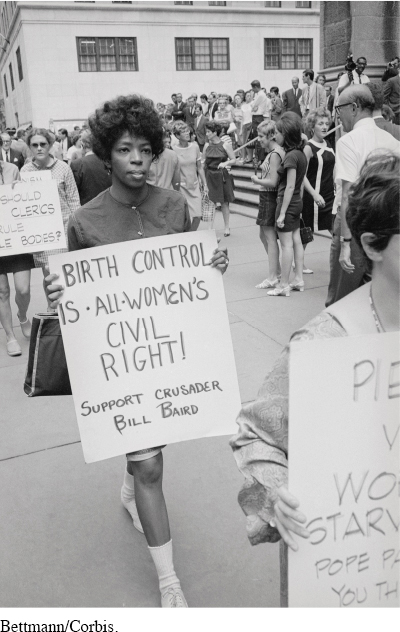Student Rebellion, the New Left, and the Counterculture
Although materially and legally more secure than their African American, Indian, and Latino counterparts, white youths also expressed dissent, participating in the black freedom struggle, student protests, the antiwar movement, and the new feminist movement. Challenging establishment institutions, young activists were part of a larger international phenomenon of student movements around the globe.
The central organization of white student protest was Students for a Democratic Society (SDS), whose 1962 statement of purpose asserted, “We are people of this generation, bred in at least modest comfort, housed now in universities, looking uncomfortably at the world we inherit.” The idealistic students criticized the complacency of their elders, the remoteness of decision makers, and the powerlessness and alienation generated by a bureaucratic society. SDS aimed to mobilize a “New Left” around the goals of civil rights, peace, and universal economic security. Other forms of student activism soon followed.
The first large-scale white student protest arose at the University of California, Berkeley, in 1964, when university officials banned students from setting up tables to recruit support for various causes. Led by whites returning from civil rights work in the South, the “free speech” movement occupied the administration building, and more than seven hundred students were arrested before the California Board of Regents overturned the new restrictions.
Hundreds of student rallies and building occupations followed on campuses across the country, especially after 1965, when opposition to the Vietnam War mounted and students protested against universities’ ties with the military (see “The Widening War at Home” in chapter 29). Students also challenged the collegiate environment. Women at the University of Chicago, for example, charged in 1969 that all universities “discriminate against women, impede their full intellectual development, deny them places on the faculty, exploit talented women and mistreat women students.” At Howard University, African American students called for a “Black Awareness Research Institute,” demanding that academic departments “place more emphasis on how these disciplines may be used to effect the liberation of black people.” Across the country, students won curricular reforms such as black studies and women’s studies programs, more financial aid for minority and poor students, independence from paternalistic rules, and a larger voice in campus decision making. (See “Analyzing Historical Evidence: Student Protest.”)
Student protest sometimes blended into a cultural revolution against nearly every conventional standard of behavior. Drawing on the ideas of the Beats of the 1950s (see chapter 27), the so-called hippies rejected mainstream values such as consumerism, order, and sexual restraint. Seeking personal rather than political change, they advocated “Do your own thing” and drew attention with their long hair, wildly colorful clothing, and drug use. Across the country, thousands of radicals established communes in cities or on farms, where they renounced private property and shared everything. [[LP Photo: P28.09 Birth Control /

> UNDERSTAND
POINTS OF VIEW
What did white middle-class student activists hope to gain from their participation in the student movement and counterculture?
Rock and folk music defined both the counterculture and the political left. Music during the 1960s often carried insurgent political and social messages that reflected radical youth culture. “Eve of Destruction,” a top hit of 1965, reminded young men of draft age at a time when the voting age was twenty-one, “You’re old enough to kill but not for votin’.” The 1969 Woodstock Music Festival, attended by 400,000 young people, epitomized the centrality of music to the youth rebellion. Hippies faded away in the 1970s, but many elements of the counterculture—rock music, jeans, and long hair, as well as new social attitudes—filtered into the mainstream. More tolerant approaches to sexual behaviors spawned what came to be called the “sexual revolution,” with help from the birth control pill, which became available in the 1960s. Self-fulfillment became a dominant concern of many Americans, and questioning of authority became more widespread.
Understanding the American Promise 3ePrinted Page 813
Section Chronology